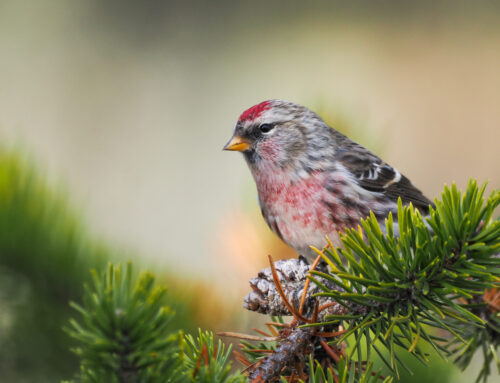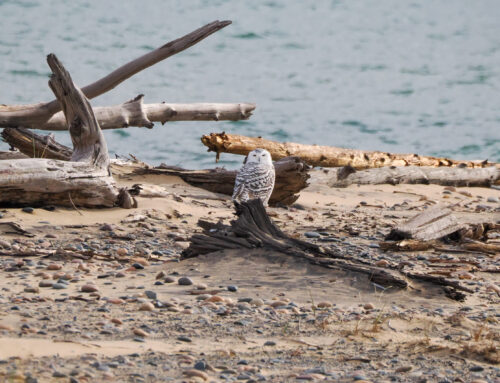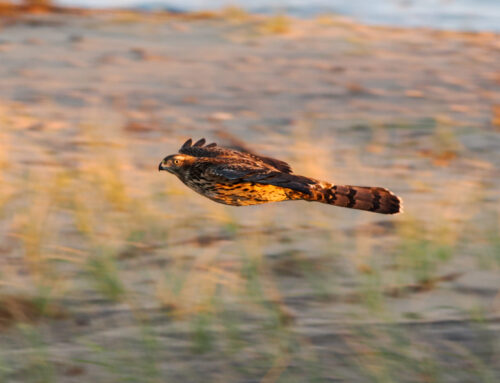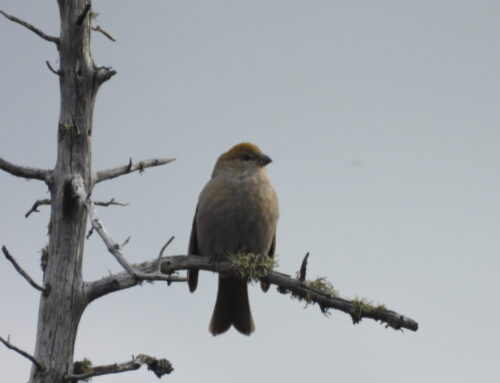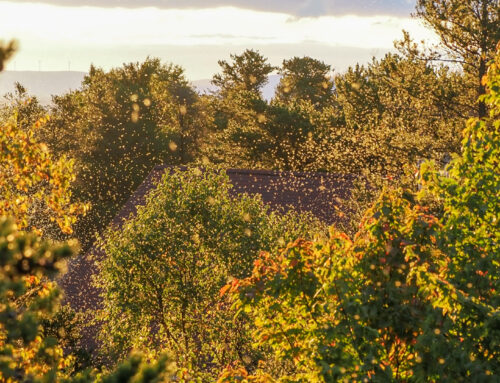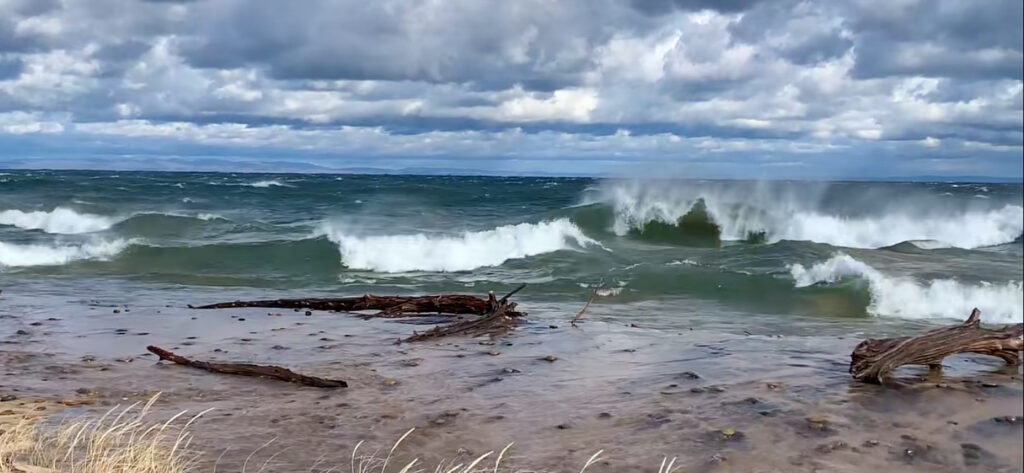
My view of Lake Superior on November 4th, with waves pushing the water to mere feet away! Photo by Clay Bliznick.
Despite the challenging conditions, bird activity remained lively. Waterbird movement was steady-to-booming through the week (Check out Frank’s blog as always!), and songbird migration continued to show some interesting trends. With a little more than a week left to the season, it’s starting to become clear which winter finches are moving and which are not. To me, Redpolls have taken the spotlight at the Point this fall, with numbers increasing daily. I counted close to 100 moving east past the raptor deck in just 1.5 hours on Sunday (Nov. 2nd) and had 150+ came in off the lake during the waterbird count on Tuesday (Nov. 4th). I was occupied with counting waterbirds for the most part, so I suspect there were many more! American Goldfinches have also been abundant, with close to 200 recorded on the 2nd’s morning flight count, but substantially more (hundreds more!) descending on the Point afterward to fill trees and feeders alike. Pine Grosbeaks have been far more numerous than last fall, with numbers pushing forty individuals on Nov. 3rd compared to only a handful for the entirety of last season. Evening Grosbeaks have also had a strong showing, and reports are already reaching as far south as Illinois and central Ohio. By contrast, crossbills have been scarce. A few White-winged Crossbills appeared over the weekend (a group of ~20), but Red Crossbills remain surprisingly limited. Aside from finches and Snow Buntings, few other songbirds are around now. Small groups of Black-capped Chickadees and American Tree Sparrows persist, but most other species are down to single digits or gone entirely as the season winds toward its close.

American Goldfinch waving ‘hi’ to the camera. Photo by Clay Bliznick.
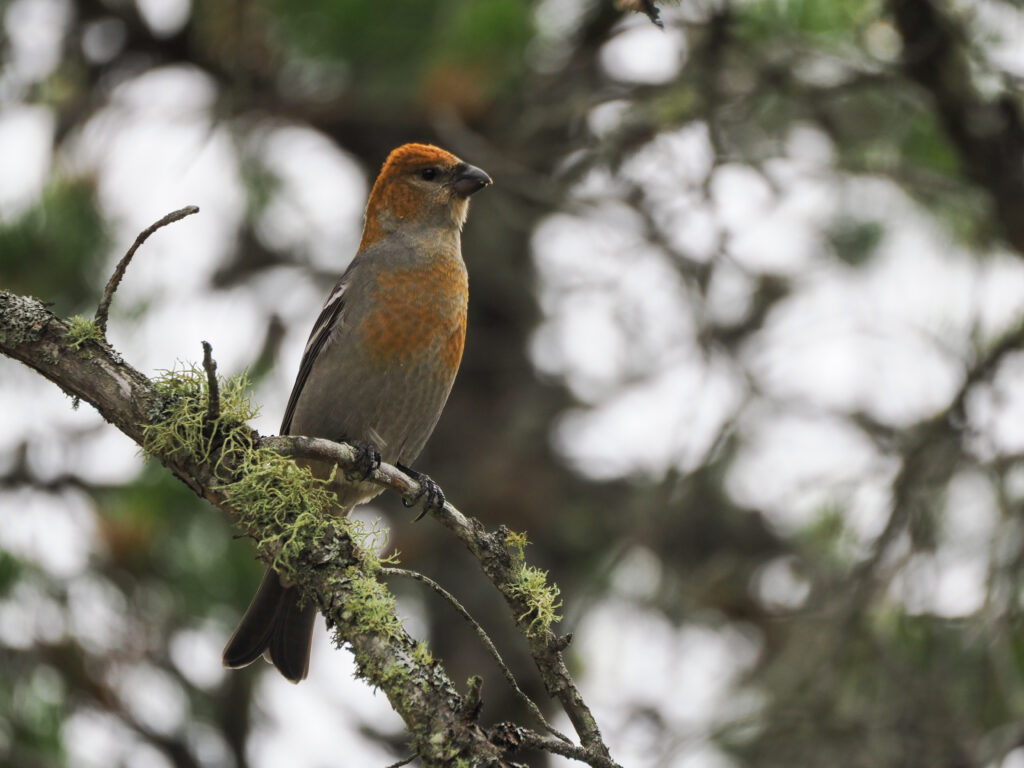
While not an adult male, the subtle orange tones on this Pine Grosbeak were still quite striking. Photo by Clay Bliznick.
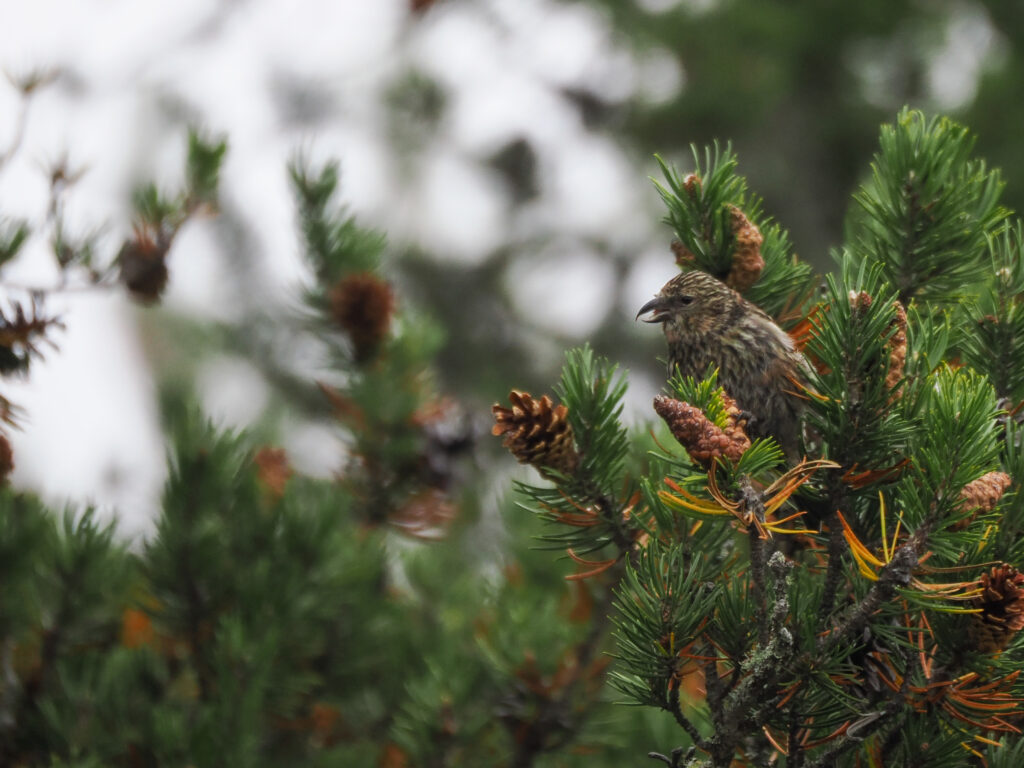
A young White-winged Crossbill starting to molt in some of its first reddish feathers. Photo by Clay Bliznick.

We might have had an American Goldfinch or two visiting the feeders. on Sunday Photo by Clay Bliznick.
– Clay Bliznick
2025 Fall Field Ornithologist
Featured Photo: male Evening Grossbeak | Clay Bliznick
Track the morning flight counts on Trektellen.
Keep up with the 2025 Fall Field Ornithologist’s weekly blog posts and follow WPBO’s social media (Facebook, Instagram, and X).
Join Clay for one of his WPBO Migratory Bird Walks offered every weekend through November 15.
Learn more at wpbo.org/events.

Clay Bliznick, MS: 2025 Fall Field Ornithologist
Clay worked as the WPBO fall field ornithologist in 2024 and is excited to return for the fall of 2025. He first took an interest in birds during a high school trip to Alaska, where he was struck by the flamboyance of magpies, the sleek, penguin-like appearance of alcids, and the sheer number of waterbirds residing along the coast. He dove headfirst into the world of birding while an undergraduate at the University of Kentucky, spending every free second exploring his home state for exciting new birds and places. Afterwards, he attended graduate school at Murray State University and wrote a master’s thesis examining the response of bird communities to environmental factors in Western KY bottomland hardwood forest restorations. For the last several years, Clay has traveled throughout the US working with birds in varying capacities, including nest monitoring of Florida Grasshopper Sparrows and Crested Caracaras, conducting surveys of Swallow-tailed Kite post-breeding roosts, and collecting breeding bird data in North and South Dakota for the Bird Conservancy of the Rockies.


